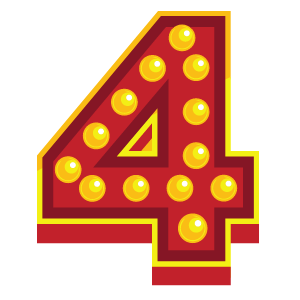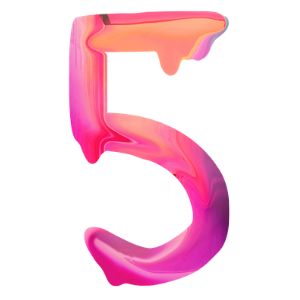
Exercise 2: Voices of the victims – counter-storytelling
The goal of this exercise
This exercise is concentrates on 1) recognizing that some minority group voices have been absent from the dominant narrative of history; 2) recounting stories from Roma themselves and 3) commemorating Roma victims by hearing their own voices recalling how they have experienced the Holocaust.
Instruction for teachers and students
Teachers need to discuss the importance of counter-storytelling with students. Solorzano and Yosso defined counter-storytelling as “a method of telling the stories of those people whose experiences are not often told”[1]. In other words, counter-storytelling is a powerful tool allowing to consider several viewpoints and challenge the dominant narrative. Students may be asked to think of any event in their life that was narrated (described) differently from various viewpoints.
Methods
As to learning methods, this exercise primarily relies on film excerpts, which provide a gatweay into original footage and voices of Roma. It is therefore crucial to listen to the Roma voices presented in the films.
Please watch the following original footage:
Please pause at 0 min. 06 sec. and look at the still. It was often reproduced as a photograph and became relatively well-known, symbolizing the Holocaust. Please describe this photo in a few sentences answering the following questions:
- What ethnic group do you think the girl belongs to?
- How old do you think she is?
- Have you seen this image before or have you heared her story before?
Description of the film shot and Roma Holocaust commemoration:
The film was shot in May 1944, and the girl depicted on the still discussed above was Anna Maria ‘Settela’ Steinbach, a Sinti[2] girl from the Netherlands, who is showed glancing outside one last time before the doors are closed. Later, Settela was transported to Auschwitz-Birkenau, where she died in one of the gas chambers. Importantly, while this photo became world famous and used for numerous commemorative events and sites, it was a lesser-known fact that this girl was Dutch Sinti – an indication that little to no attention was paid to Roma and Sinti victims of the Holocaust. It was only in 1992, that Settela’s identity was confirmed due to the persistent research of a Dutch journalist, Aad Wagenaar.
To think about…
Michel-Rolph Trouillot, in his well-known book Silencing the Past (1995), argued that “bundles of silences” are created due to unequal power structures that construct and reinforce certain historical narratives. Hence, the silence is important for understanding the inherent biases in our interpretation of historical events, how certain dominant narratives are established and, in turn, silence others. Dominant narratives are usually the ones incorporated into the education curricula, including textbooks; nevertheless, spaces can be created for previously silenced stories to emerge through a process of counter storytelling.[3]
Recounting stories from many perspectives is important in understanding the complexities of lived historical experience. This approach is particularly important in history education today, because it helps exposing injustices that oppressed groups suffered while puts a human face to the experiences of marginalized groups, such as the Roma. Moreover, recounting stories from the perspective of Roma (or other marginalized groups, for that matter), also promotes critical thinking and a sense of social justice. Critical thinking, in short, is an important educational goal, and it “occurs when students are analyzing, evaluating, interpreting, or synthesizing information and applying creative thought to form an argument, solve a problem, or reach a conclusion”.[4] While social justice has multiple definitions, importantly it is focused on societal fairness and equality.
These stories strengthen not only a new form of narrative about the Holocaust, but also collective memory that all Roma share. Two commemorative dates have been designated to that end:
- August 2: International Romani Holocaust Day
- May 16: Romani Resistance Day
On these dates, pro-Roma civil society and NGOs—who played a vital role in establishing these commemorative dates—often gather in public places and hold events. Acknowledgment of the Roma Holocaust through commemorative dates and events is key to “recognizing the genocide they suffered and getting their story told not as an afterthought, but as a vital part of European history,” according to the USC Shoah Foundation.[5] The public recognition of the Roma Holocaust is also a step towards replacing Roma history of oppression with history of resistance.
Watch these testimonies, as the few memories that remain:
These videos contain rare footage with Roma Holocaust survivors, who describe the events of the past and their coping techniques during World War II, as well as their ability to overcome the past trauma in the later life. They are important in putting a human face to history and treating the Roma Holocaust as a drastic fact that affect many human lives. Moreover, they make it possible to understand another important perception of the minority whose voice is crucial in understanding the history of Roma.
Questions for reflection
Reflection on the topics and content of this exercise may be done either:
- collectively – discussion in class, with anyone sharing their experience and the teacher moderating – in groups
- or individually, in writing.
At the beginning of reflection, teachers may wish to clarify a few concepts with the class:
- National history: every country has its own national history, some may be more sensitive to the role of minorities than others
- Constructing a shared history for Roma—a highly diverse group—is significantly more difficult than for those who belong to the same nation (e.g., Hungarians, Poles, Austrians, etc). Please consider this article and a short animation of Roma history.
Answer the questions
- What is the importance of history and memory for various nations (in terms of nation-building, cohesion, patriotism, national identity)?
- Why is it important that minority groups also have their own history?
- Why is it important that history is not only recounted from the perspective of the dominant group?
- Can you think of other examples of “bundles of silence”?
[1] Solórzano DG, Yosso TJ. Critical Race Methodology: Counter-Storytelling as an Analytical Framework for Education Research. Qualitative Inquiry. 2002;8(1):23-44.
[2] Sinti are a “sub-division of the European Romani population” (Margalit & Matras, 2007, para. 7).
[3] James Miles (2019) Historical silences and the enduring power of counter storytelling, Curriculum Inquiry, 49:3, 253-259.
[4] The Glossary of Educational Reform (2013). Critical Thinking.
[5] Read the full article entitled “The History and Significance of August 2, Roma Holocaust Memorial Day” (2017)







